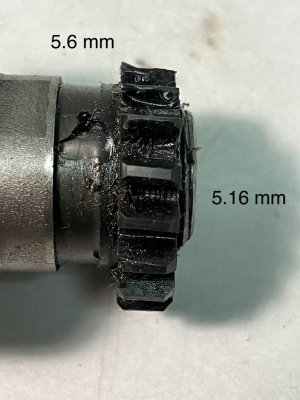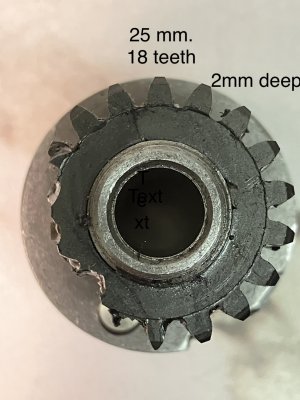- Joined
- Jan 28, 2022
- Messages
- 10
So I have a busted nylon gear (worm wheel) from a sewing machine. I hope to machine one from brass or possibly aluminum. The work load is minimal since it only drives a cam for various stitch patterns. Very common issue with this particular series of machines if you screw up reversing the feed of the material being sewed.
I don't have a dividing head for my mill (yet). Previous gears I cut was on my lathe with a milling attachment using a dividing wheel jig. I could do the same this time but why not use the mill? I'll need to make a jig of course. What angle will be required? I have a digital angle gauge. BTW, this gear threads (metric) onto the hub. To get a good mesh with the worm and worm wheel I may have to remount the gear for touch ups. That should be easy I would guess. Hopefully there is enough information in the pictures.
Thanks
I don't have a dividing head for my mill (yet). Previous gears I cut was on my lathe with a milling attachment using a dividing wheel jig. I could do the same this time but why not use the mill? I'll need to make a jig of course. What angle will be required? I have a digital angle gauge. BTW, this gear threads (metric) onto the hub. To get a good mesh with the worm and worm wheel I may have to remount the gear for touch ups. That should be easy I would guess. Hopefully there is enough information in the pictures.
Thanks



